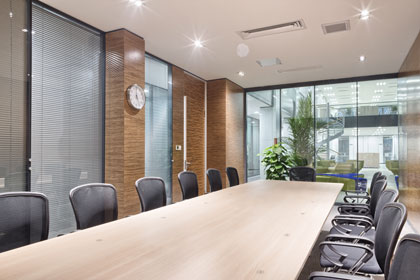Productivity in the modern workplace is important, and it has a great impact on the environment in which individuals operate, and is no longer just determined by individual performance. Once thought to be only a logistical or aesthetic issue, office space planning has developed into a strategic component. It influences productivity, creativity, communication, and general well-being. More than just a place to work, a well-designed workplace offers an environment that improves concentration, encourages teamwork, and upholds corporate culture. It is more important than ever for organizations to comprehend the significance of office space planning for productivity as they negotiate the shifting dynamics of hybrid work patterns and changing employee expectations.
Fostering Cooperation With Astute Design
Keeping individual concentration while encouraging teamwork is one of the main goals of contemporary office design. Popular because they promote contact, open-plan offices frequently require balance to prevent excessive noise and distraction. There are many flexible zones that have smart planning; these include semi-private spaces for team conversations, open areas for ideation, and quiet locations for concentration. Employees can select workspaces that best suit their jobs thanks to this zoning approach, which improves communication and teamwork. Additionally, communal areas such as coffee shops, lounges, and work pods are great spaces. Workers can use them as unofficial gathering places that organically foster innovative communication.
Understand the Connection Between Productivity and Space
Employees’ thoughts, feelings, and performance are directly impacted by their physical surroundings. While poorly constructed workplaces might promote focus and engagement, poorly organized areas can cause distractions, tension, and a decline in motivation. For example, having access to natural light has been associated with increased energy and happiness. On the other hand, ergonomic furniture eases physical strain and increases comfort during extended workdays. Workstations, conference spaces, and break areas can be arranged strategically to facilitate mobility and reduce needless disruptions, especially if you use professional commercial interior design services and talk to people who know all about office planning. These people will tell you what to do and how to organize your space, so make sure you find the right help as soon as you can.
Maximizing Flexibility and Space Utilization
Effective space design guarantees the best possible use of the available square footage in addition to comfort and aesthetics. Underutilized spaces and congested workplaces are problems for many businesses, and they can both harm employee morale and output. Businesses can modify areas to meet changing needs by integrating modular furniture or multipurpose zones and carefully planning their layouts. Because employees may not always be in the office and workplaces must adapt to varying attendance, the advent of hybrid work has made flexibility a primary goal. Office space is useful and effective by incorporating hot-desking technologies, adjustable dividers, and flexible meeting spaces. Businesses can future-proof their offices and sustain productivity in the face of organizational changes by putting flexibility first.
Improving Employee Contentment and Well-Being
Workers can be at ease, and feel respected, and productivity soars. Because office space planning attends to both physical and emotional demands, it directly promotes well-being. Ergonomic design, noise reduction, and adequate ventilation are some factors that lower health hazards and tiredness. You can use biophilic design, which includes natural materials, vegetation, and outdoor views, reduces stress and enhances cognitive function. Additionally, areas like wellness rooms or break lounges that are intended for informal conversation or relaxation aid in staff renewal and burnout prevention. A well-designed workspace fosters loyalty, contentment, and ongoing motivation. They are all essential for long-term productivity by communicating that the organization values its employees.
Mirroring Brand Identity and Company Culture
Beyond just being utilitarian, office design is a potent way to convey a company’s beliefs and ethos. A well-designed workspace conveys professionalism, originality, and concern for the well-being of employees. For instance, although legal firms can favor regimented layouts that prioritize professionalism and confidentiality, tech companies frequently create open and inventive areas to represent agility and invention. Using visual themes, artwork, and brand colors strengthens identity and fosters a feeling of community among staff members. People are more inclined to take pleasure in their work and coordinate their efforts with organizational objectives when they perceive their workplace as an extension of the purpose and values of their company. Space planning thus becomes a strategic branding tool that combines function and beauty.
Businesses that engage in smart space planning will discover that they are not just increasing productivity. They are also fostering an environment where people can flourish as the modern workplace continues to change. After all, productive work starts with productive locations, and a company’s potential is determined by how well those spaces are designed.



